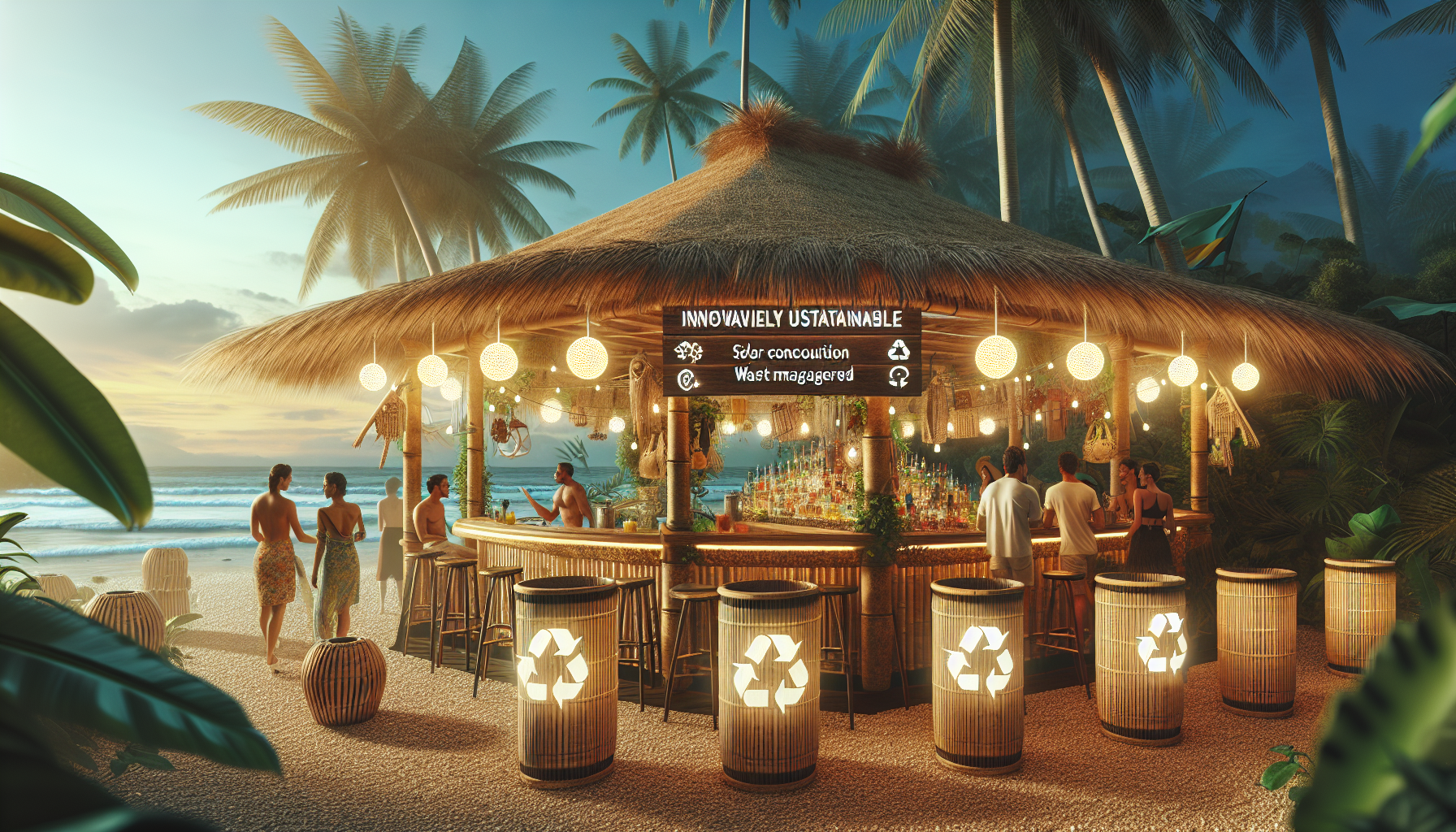Transform your Tiki Bar into an eco-friendly oasis with these simple and effective sustainable practices. From reusing materials to incorporating solar-powered lighting, there are plenty of ways for you to minimize your impact on the environment without compromising the vibrant and laid-back atmosphere that Tiki Bars are known for. By making mindful choices, you can create a space that not only delights your guests but also contributes to a greener, more sustainable future. Join us as we explore the exciting world of sustainable Tiki Bar practices and discover how you can bring a touch of sustainability to your own corner of paradise.
Choosing Sustainable Construction Materials
Selecting Recyclable or Renewable Materials
When it comes to building or renovating your tiki bar, one of the first steps towards sustainability is choosing the right construction materials. Opting for recyclable or renewable materials can significantly reduce the environmental impact of your project. Materials such as recycled steel, reclaimed wood, and recycled plastic can all be great choices for constructing the bar structure, furniture, and decor.
Recycled steel is an excellent option for its durability and ability to be recycled again at the end of its life cycle. Reclaimed wood adds a unique and rustic touch to your bar while also reducing the demand for new lumber. Using recycled plastic for outdoor furniture not only prevents it from ending up in landfills but also helps conserve natural resources.
Using Salvaged or Reclaimed Wood
Salvaged wood, also known as reclaimed wood, is an eco-friendly alternative to using new timber in your tiki bar construction. By repurposing wood from old buildings, barns, or factories, you not only give a new life to these materials but also prevent the need for cutting down more trees. Salvaged wood can be used for various purposes in your bar, such as flooring, walls, and even for making unique furniture pieces like tables and chairs. Its weathered and aged appearance adds character and charm to your tiki bar, creating a cozy and inviting atmosphere.
Opting for Sustainable Bamboo
Bamboo is a fast-growing and renewable resource that has gained popularity as a sustainable construction material in recent years. When compared to traditional hardwood, bamboo can be harvested in as little as 3-5 years, while many hardwood species take decades to mature. This rapid growth rate makes bamboo a highly sustainable choice for flooring, walls, and even roofing materials in your tiki bar. Additionally, bamboo is naturally resistant to pests and requires minimal chemical treatment, further enhancing its eco-friendly qualities.
Considering Natural Fiber Thatch
If you’re aiming for an authentic tropical vibe in your tiki bar, consider using natural fiber thatch for the roof. Thatch is made from dried reeds, grasses, or palm leaves and has been used for centuries in tropical regions. It provides excellent insulation, keeping your bar cool in hot weather and providing a cozy ambiance. Choosing natural fiber thatch over synthetic alternatives ensures that the materials used are biodegradable and sustainable. Additionally, using natural fibers supports local communities that specialize in thatching and promotes cultural heritage preservation.
Exploring Eco-friendly Paints and Finishes
When giving your tiki bar a fresh coat of paint or finishing the wood surfaces, opt for eco-friendly products that contain low levels of volatile organic compounds (VOCs). VOCs can release harmful chemicals into the air, contributing to poor indoor air quality and potentially causing health issues. Look for paints that are labeled as “low-VOC” or “zero-VOC” to minimize environmental impact without compromising the aesthetics of your bar. Choosing water-based finishes for wood surfaces is another sustainable option that reduces the use of solvents and harmful chemicals.

Energy Efficiency in Lighting and Appliances
Switching to LED Lighting
Tiki bars are known for their atmospheric lighting, and you can easily enhance this experience while reducing energy consumption by switching to LED lights. LED lights are highly energy-efficient, using significantly less electricity than traditional incandescent bulbs. They also have a longer lifespan, reducing the frequency of replacement and waste. LED lights come in a variety of styles, including warm white or colored options, allowing you to create the desired ambiance for your tiki bar while reducing your carbon footprint.
Installing Solar Panels
Harnessing the power of the sun is an excellent way to make your tiki bar more energy-efficient and sustainable. By installing solar panels on the roof or nearby structures, you can generate clean and renewable energy to power your lighting, appliances, and other electrical needs. Solar panels not only reduce your reliance on fossil fuels but can also help you save money on energy bills in the long run. Consult with a solar energy professional to determine the best size and placement of solar panels for your tiki bar based on your energy requirements and local climate.
Using Energy-efficient Appliances
When selecting appliances for your tiki bar, opt for models that are Energy Star certified. Energy Star appliances are designed to be more energy-efficient than standard ones, helping you save both energy and money. Look for Energy Star labels on refrigerators, freezers, dishwashers, and other appliances to ensure that they meet the strict efficiency criteria. Additionally, consider the size and capacity of the appliances to avoid unnecessary energy usage. Smaller, appropriately sized appliances are generally more efficient and consume less energy compared to oversized ones.
Implementin

